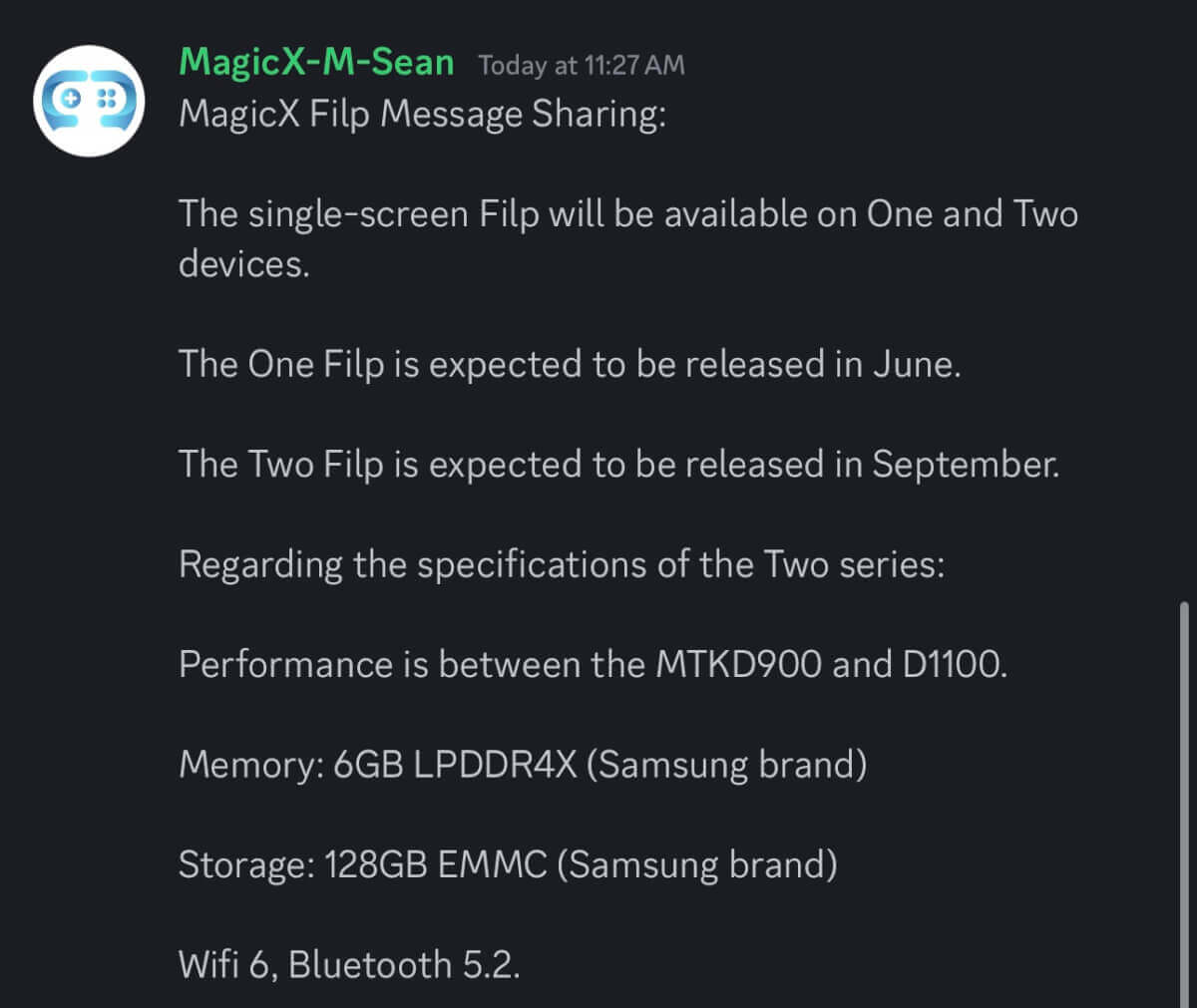MagicX has announced that it’s working on not one, but two clamshell handhelds due to release later in 2025.
We reported last year on MagicX rebranding their products to more accurately describe the internals within. Their first major handheld, the XU Mini M, didn’t describe its 2.8-inch screen or its expected Rockchip 3562 chipset. However, its sequel, the MagicX Mini Zero 28, tries to clarify what users can expect by clarifying that it’s Mini and not a touchscreen, part of its Zero branding, and the 28 relating to the screen size, 2.8 inches.
Similar to how Anbernic names its consoles by giving numbers to specific chipsets, MagicX uses numbers to express expected processing power. Zero being their lightest, One being slightly more powerful, and Two being their current most performant handhelds. Touch and Mini denote whether the screen is touchscreen or not — and that’s pretty much it.
Clamshell, Not Dual Screen
It’s worth mentioning that the upcoming two devices are not dual-screen handhelds like the recently announced ONEXSUGAR and AYANEO Flip DS. These two upcoming MagicX devices are meant to rival the many SP-inspired handhelds we’ve seen released recently. However, MagicX has laid claim to the existence of an eventual dual screen handheld within 2025.
The MagicX dual screen handhelds have been long awaited by members of the community. The Zero 40, not to be confused with the dual screen handhelds being discussed currently, has one single screen that is long enough to allow for both screens of the DS to be emulated one atop the other. The handhelds MagicX is now teasing information about will, however, feature two separate screens.
New Clamshells Are on the Way
Now, exclusively on our Discord, the company has announced that the One and Two lines will both have their own single-screen clamshell release. This positions MagicX as one of the headlining companies willing to compete with the Miyoo Flip, Anbernic RG35XX SP, and the upcoming Powkiddy V90 refresh.
Outside of wider devices like the upcoming Retroid Pocket Flip 2, there’s a potential for MagicX to release a handheld that stands far above other clamshell designs. However, we have yet to see what the company has in store for its customers.
The mentioned RAM and storage being the equivalent to what’s available on a device like the Retroid Pocket Mini does introduce some intrigue into what type of power is to be expected within the handheld. Performance for the Two Flip will reside somewhere between the MediaTek D900 and D1100. The latter is the same processor found in the Retroid Pocket 4 Pro and the cheaper Pocket Flip 2 configuration. With that in mind, it could be that the One line will compete with the aforementioned Miyoo Flip, Anbernic RG35XX SP, and the upcoming Powkiddy V90 refresh, while the Two is meant to go head-to-head with the entry-level Retroid Pocket Flip 2.
Relatively Powerful with a Hinge
Where it gets interesting is the improvements found in the One and Two line devices over their peers. The current Zero 28, one of the company’s lowest performing handhelds, features an A133P, the same chipset found in the TrimUI Brick and Smart Pro. Those devices can, with relative ease, emulate up to PS1 with consoles like N64, PS1, and Dreamcast being somewhat compatible depending on the game being played. The upcoming Touch Two 32 is said to feature a MediaTek Helios G99, the same chipset found in the AYANEO Pocket Micro Classic.
The Helios G99 is one of the main reasons a common critique of the Pocket Micro is that it is simply overkill for its intended use-case. Should MagicX use a similar chipset in their clamshell handheld, it’s possible the console will sit alone, in respect to power, above other clamshell options.

Over the past few years of MagicX’s popularity, the company has been subject to controversy due to, as the company claims, being defrauded by the processor supplier and selling them RK3326 chips as RK3562 for the original XU Mini M. However, MagicX continues to innovate by introducing products that aim to fit a specific need that is otherwise not delivered within the retro handheld space. For instance, the Zero 28 is a micro device that features Android out of the box, and the Zero 40 is perfectly suited for DS emulation with its elongated screen.
MagicX has been supplying members of our Discord with a constant stream of news and development and engineering countries for their devices. To get the earliest look, be sure to join. As the company details new changes for their devices, Retro Handhelds will continue to deliver the news.
What did you think of this article? Let us know in the comments below, and chat with us in our Discord!
This page may contain affiliate links, by purchasing something through a link, Retro Handhelds may earn a small commission on the sale at no additional cost to you.


